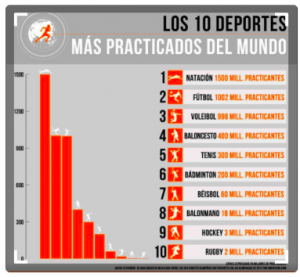Extempore Sync Drop In and Other Exciting Updates
Hello there! Some exciting news to share: synchronous rooms on Extempore now come equipped with our…
 When I first started using infographics, I would I generate and ask the students questions. However, it seemed too rapid-fire to me and that I was doing all of the work! So, then I started modeling a few, and then I had the students take over. Working in pairs, students ask each other questions about the information provided on the infographic. Of course, the focus is on question words so sometimes I review those first, and these past few years I have actually had them posted throughout the room. As students ask each other questions, I circulate around the room to spot check, model or rephrase.
At first glance, you may think that the infographic above is fairly limited, but sometimes less is more! I also try to keep it simple with novice learners. More advanced learners can handle more text.
Here is a list of possible questions/topics that could be generated from the above infographic:
When I first started using infographics, I would I generate and ask the students questions. However, it seemed too rapid-fire to me and that I was doing all of the work! So, then I started modeling a few, and then I had the students take over. Working in pairs, students ask each other questions about the information provided on the infographic. Of course, the focus is on question words so sometimes I review those first, and these past few years I have actually had them posted throughout the room. As students ask each other questions, I circulate around the room to spot check, model or rephrase.
At first glance, you may think that the infographic above is fairly limited, but sometimes less is more! I also try to keep it simple with novice learners. More advanced learners can handle more text.
Here is a list of possible questions/topics that could be generated from the above infographic:
 After the time allotment, I pair up students and they ask each other their sets of questions. Again, it is important to provide informal feedback in this formative speaking activity. Get a feel for when most students have finished, and then have volunteers ask you their questions.
After the time allotment, I pair up students and they ask each other their sets of questions. Again, it is important to provide informal feedback in this formative speaking activity. Get a feel for when most students have finished, and then have volunteers ask you their questions.
 This post is courtesy of Andrea Nazelli who is the Spanish department chair and teacher at Detroit Country Day School. Want more activity ideas? See one of her previous posts: A No Prep Activity for the World Language Classroom.
This post is courtesy of Andrea Nazelli who is the Spanish department chair and teacher at Detroit Country Day School. Want more activity ideas? See one of her previous posts: A No Prep Activity for the World Language Classroom.

